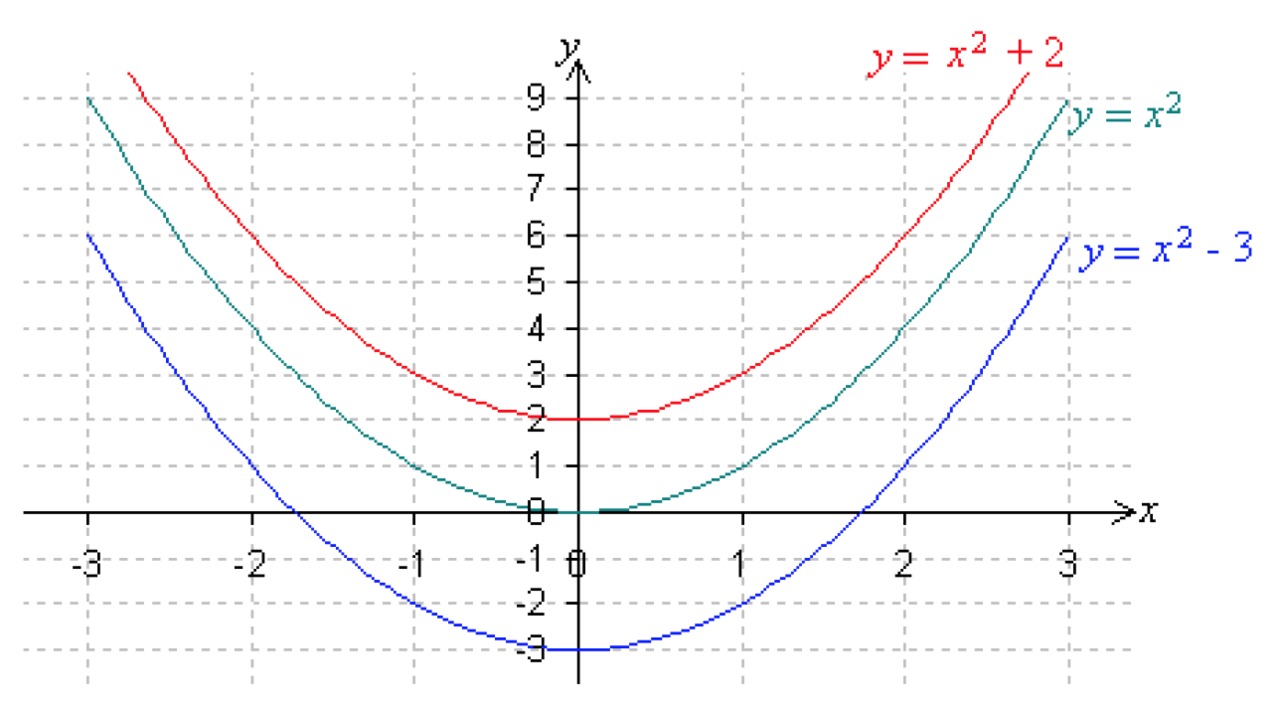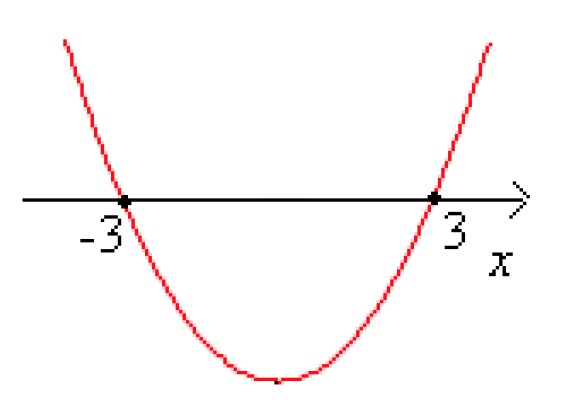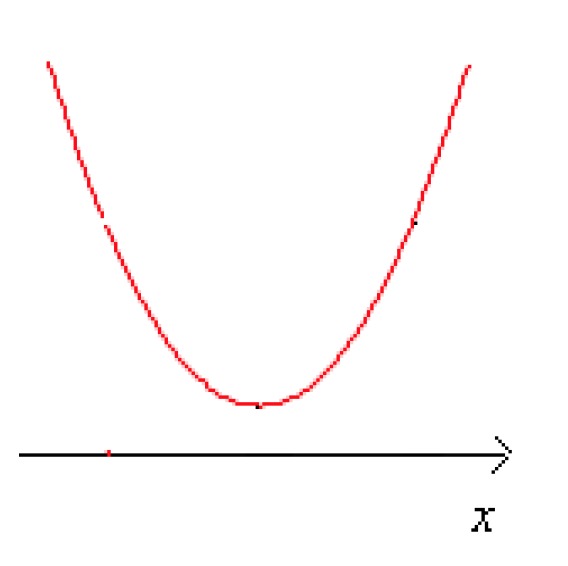6. Incomplete quadratic equations I
Incomplete quadratic equations I
The general form of a quadratic equation is [[$ ax^2 + bx + c = 0 $]].
If all terms appear in the equation, the equation is called a complete quadratic equation.
If the term [[$ bx $]] or the constant [[$ c $]] is missing, the equation is an incomplete quadratic equation.
There are solutions for incomplete quadratic equations depending on the type of equation. Let us first examine the equations of form[[$ ax^2 + c = 0 $]]. Let's draw a few graphs of function[[$ f(x) = ax^2 + c $]] to the same coordinate system, varying the value of the constant [[$ c $]].

The graphs of the functions are congruent and their axis of symmetry is the [[$ y $]]-axis. The constant [[$ c $]] indicates the point where the vertex of the parabola is located. The solutions of the equation are seen from the graph as zeros where the graph intersects the [[$ x $]]-axis. The number of zeros depends on whether the constant [[$ c $]] in the function is positive or negative.
- If [[$ x^2 $]] is negative, the equation has two solutions that are opposite to each other.
- If [[$ c = 0 $]], the only solution to the equation is [[$ x = 0 $]].
- If [[$ c $]] is positive, the equation has no solution.
Note! The former only applies to parabolas that open upwards. How does the number of solutions depend on the constant [[$ c $]] if [[$ a $]] is negative?
- Solve for [[$ x^2 $]].
- Take the square root of each side of the equation.
Note! When taking the square root, both the positive and the negative case must be taken into account, since the negative base number raised to the second power is also positive.
Example 1
Solve the equation [[$ x^2 - 9 = 0 $]] and outline a graph of the parabola defined by the equation.

Answer: [[$ x = 3 $]] or [[$ x = -3 $]]
Example 2
Solve equation [[$ 2x^2 + 4 = 0 $]] and outline a graph of the parabola defined by the equation.
[[$ \begin{align*}
2x^2 + 4 &= 0 \\
x^2 &= -4 \;\;\;\;{\color {blue} {||: 2}}\\
x^2 &= - \displaystyle\frac {4} {2} \\
x^2 &= -2 \;\;\;\;{\color {blue} {\text {You cannot take the square root of a negative number!}}}\\
& \;\;\;\;\;\;\;\;\;\;\;\;{\color {red} {\text {There is no solution to the equation}}}\\
\end{align*} $]]

Answer: The equation has no solution.
Exercises
Basic exercises
Applied exercises
Challenging exercises
3/06. Submission folder for answers
Sinulla ei ole tarvittavia oikeuksia lähettää mitään.